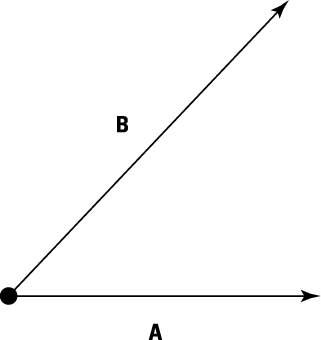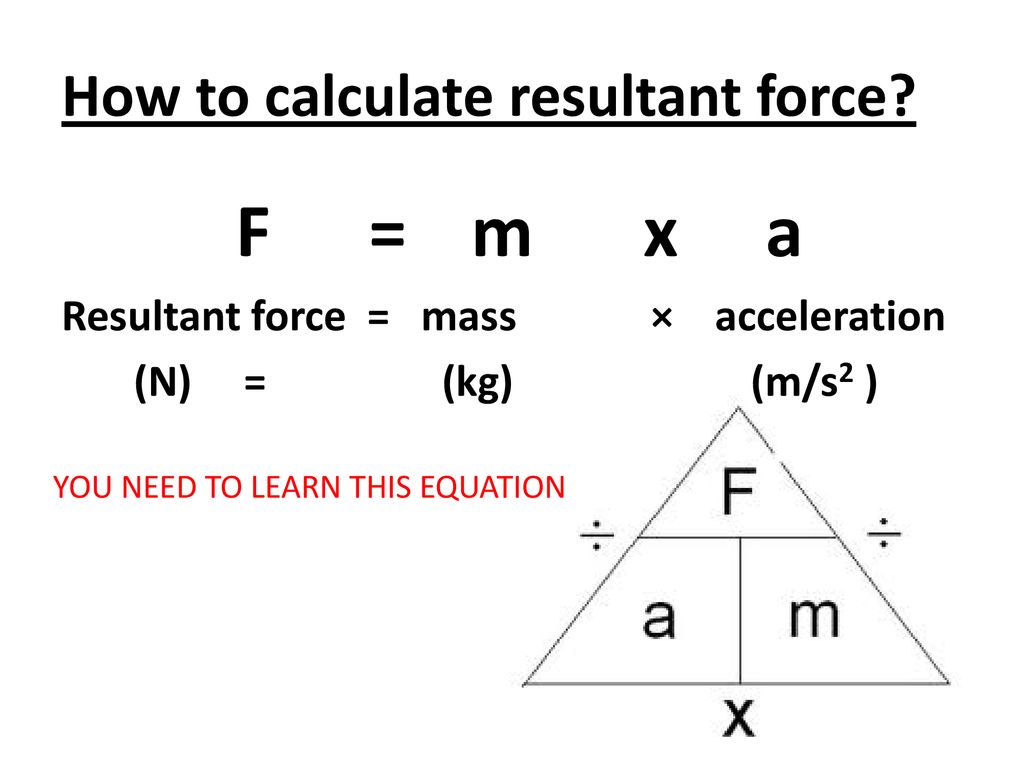How To Work Out Acceleration From Mass And Resultant Force
Indeed according to Newtons Second Law the force F that alone produces the acceleration a on an object of mass m is. Multiply mass times acceleration.

Calculating Net Force And Acceleration Dummies
There is an angle of 20 between the forces.

How to work out acceleration from mass and resultant force. What is Newtons third law. Force mass x acceleration. When youre using the force mass and acceleration formula in the imperial system ie.
F m a. In this case the motion of the block is always in the. What Is a Vector.
A resultant force in the direction of motion speeds an object up. The resultant force and acceleration will become 0 again 4 a terminal velocity is reached again. F m a Where f force m mass and a acceleration.
So force mass multiplied by acceleration. The force F required to move an object of mass m with an acceleration a is given by the formula F m x a. Force Equation F m a Newtons second law states that force is proportional to what is required for an object of constant mass to change its velocity.
For every action force there is an equal and opposite reaction force. For example if the mass is 100 g the magnitude of the force of gravity is 098 N or about 10 N. With a known mass hung vertically the magnitude of the force of gravity on the mass is known and thus the magnitude of the force causing the acceleration of the entire system is known.
This is equal to that objects mass multiplied by its acceleration. A diagram showing all the forces acting on an object. So force mass multiplied by acceleration.
Gradient acceleration change in ychange in x. - What a resultant force is - What free body diagrams are - How to calculate the resultant force from a free body diagram- The idea of spl. This force F is our resultant force.
So we can write. This equation comes from Newtons Second Law of Motion. Which indicates that the resultant force R has the same direction as a.
A F m t V 2 L a - V a V V a t. With the known expression of the resultant force it is a piece of cake to find acceleration a sliding time t and final velocity V using formulas from the acceleration calculator and the value of initial velocity V. Resultant force N mass kg x acceleration ms2.
The tendency of a force to produce. Unsupported equation acceleration ms 2 a resultant force N mass kg F m Usually written. According to Newtons second law acceleration is directly proportional to the summation of all forces that act on an object and inversely proportional to its mass.
Force can be figured out if you know the mass and acceleration of an object. Given the forces F1 612 N F2 432 N F3 184 N and their angles 16 22 36 calculate the force resultant R and its angles R R R with the x y and z axis. Mass is measured in kilograms kg.
What is a free body diagram. The acceleration magnitude of a block subjected to different forces can be determined by finding the resultant force acting on that block. Fxy Sqrt Fx2 Fy2 A tan-1 FyFx Where Fxy is the magnitude of the resultant force.
R m a. How to work out the acceleration from a velocity - time graph. Proportional to the resultant force on the object inversely proportional to the mass of the object In other words the acceleration of an object increases if the resultant force on it increases.
A second experiment can be carried out using the apparatus above to investigate how the acceleration. Force is measured in newtons N. Unsupported equation resultant force N F mass kg acceleration ms 2 m a.
A resultant force opposite to the direction of motion slows it down. Of an object depends on its mass if the resultant force. When youre using units of pounds force pounds mass and feet per second squared theres a unit of mass that you need to be aware of called the slug A slug is the amount of mass that will accelerate at 1 fts2when one pound force lbf is exerted on it.
The following equation is used to calculate the resultant force acting on an object. The forces are diagonals on each side of a rectangular parallelepiped. How to work out resultant force - if the forces are in the same direction you add them.

Newton S 2nd Law 2 Of 21 Calculate Acceleration With Friction Net Force Horizontal Youtube

Newton S Second Law Newton S Second Law States The Resultant Force On A Body Is Proportional To The Acceleration Of The Body In Its Simplest Form Ppt Download

Force Newtonmeters A Force Is A Push Or A Pull Ppt Video Online Download

Newton S 2nd Law 8 Of 21 Calculate Acceleration W O Friction Inclined Plane One Mass Youtube

Triple Physics Unit 5 Revision Ppt Download

Calculating Resultant Forces Vector Diagrams Graphs Work Done Calculations Equilibrium Parallelogram Of Forces Tension Vector Forces Gcse 9 1 Physics Igcse Revision Notes
Igcse Formula Flashcards By S Buchan Brainscape

Boardworks As Physics Dynamics Ppt Download

Newton S Second Law Newton S Second Law States The Resultant Force On A Body Is Proportional To The Acceleration Of The Body In Its Simplest Form Ppt Download

Ppt Resultant Force Powerpoint Presentation Free Download Id 6035613
What Is The Resultant Force And How To Find It With Examples Phyley






Posting Komentar untuk "How To Work Out Acceleration From Mass And Resultant Force"